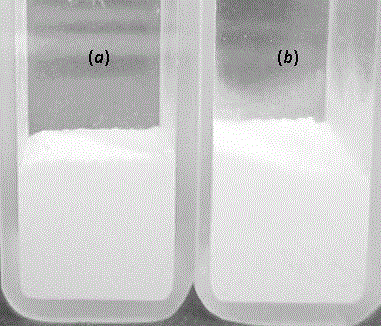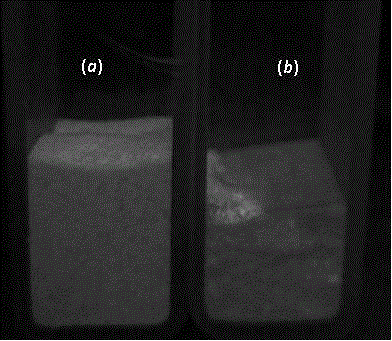Preparation method of SrAlB2O7:Eu<3+> fluorescent probe for detection of OPs (organophosphorus pesticides)
An organophosphorus pesticide, sral2b2o7 technology, applied in the field of materials science, can solve the problems of many factors affecting fluorescence quenching, and the inability to determine the exact content of pesticide residues, etc., and achieve the effect of enhanced fluorescence intensity and a wide range of applications
- Summary
- Abstract
- Description
- Claims
- Application Information
AI Technical Summary
Problems solved by technology
Method used
Image
Examples
specific Embodiment approach
[0041] detailed description: A kind of SrAl for organophosphorus pesticide detection 2 B 2 o 7 :Eu 3+ Preparation method of fluorescent probe, including Eu 3+ Interact with organic phosphorus pesticide molecules, the target analytes of pesticides, to form organic ligands, and calcine Eu after sol and gel 3+ Molecularly imprinted SrAl labeled organophosphorus pesticides 2 B 2 o 7 :Eu 3+ A fluorescent probe, characterized in that: the SrAl 2 B 2 o 7 :Eu 3+ After the template molecule is removed from the fluorescent probe, it has a selective recognition site for the target analyte organophosphorus pesticide molecule, and the target analyte organophosphorus pesticide molecule enters the SrAl 2 B 2 o 7 :Eu 3+ After the recognition site of the fluorescent probe, it will be further combined with the Eu on the recognition site 3+ Interaction occurs so that target analyte organophosphorus pesticide molecule and Eu 3+ Coordinate to form an organic ligand, which transfe...
Embodiment
[0044] Embodiment: utilize metal ion Eu 3+ Form an organic ligand with the target analyte chlorpyrifos, and then use the sol-gel method-calcination to prepare SrAl for selective recognition and sensitive detection of chlorpyrifos 2 B 2 o 7 :Eu 3+ fluorescent probe.
[0045] The first step is Eu 3+ Form an organic ligand with the pesticide target analyte chlorpyrifos molecule: First, weigh 0.3519gEu with a ten-thousandth electronic balance 2 o 3 Put it in a 100mL beaker, then use a 1mL micro-sampler with adjustable scale to pipette and add 2mL nitric acid to the above beaker, and after ultrasonic dispersion reaction for 8min, a transparent solution is formed, then weigh 1.10g of chlorpyrifos and place it after the above reaction To the transparent solution, add 20mL deionized water to dilute, ultrasonically disperse for 8min, then let stand for 25min, Eu 3+ Interact with organophosphorus pesticide molecules, the target pesticide analyte, to form organic ligands;
[0046...
PUM
 Login to View More
Login to View More Abstract
Description
Claims
Application Information
 Login to View More
Login to View More - R&D
- Intellectual Property
- Life Sciences
- Materials
- Tech Scout
- Unparalleled Data Quality
- Higher Quality Content
- 60% Fewer Hallucinations
Browse by: Latest US Patents, China's latest patents, Technical Efficacy Thesaurus, Application Domain, Technology Topic, Popular Technical Reports.
© 2025 PatSnap. All rights reserved.Legal|Privacy policy|Modern Slavery Act Transparency Statement|Sitemap|About US| Contact US: help@patsnap.com



